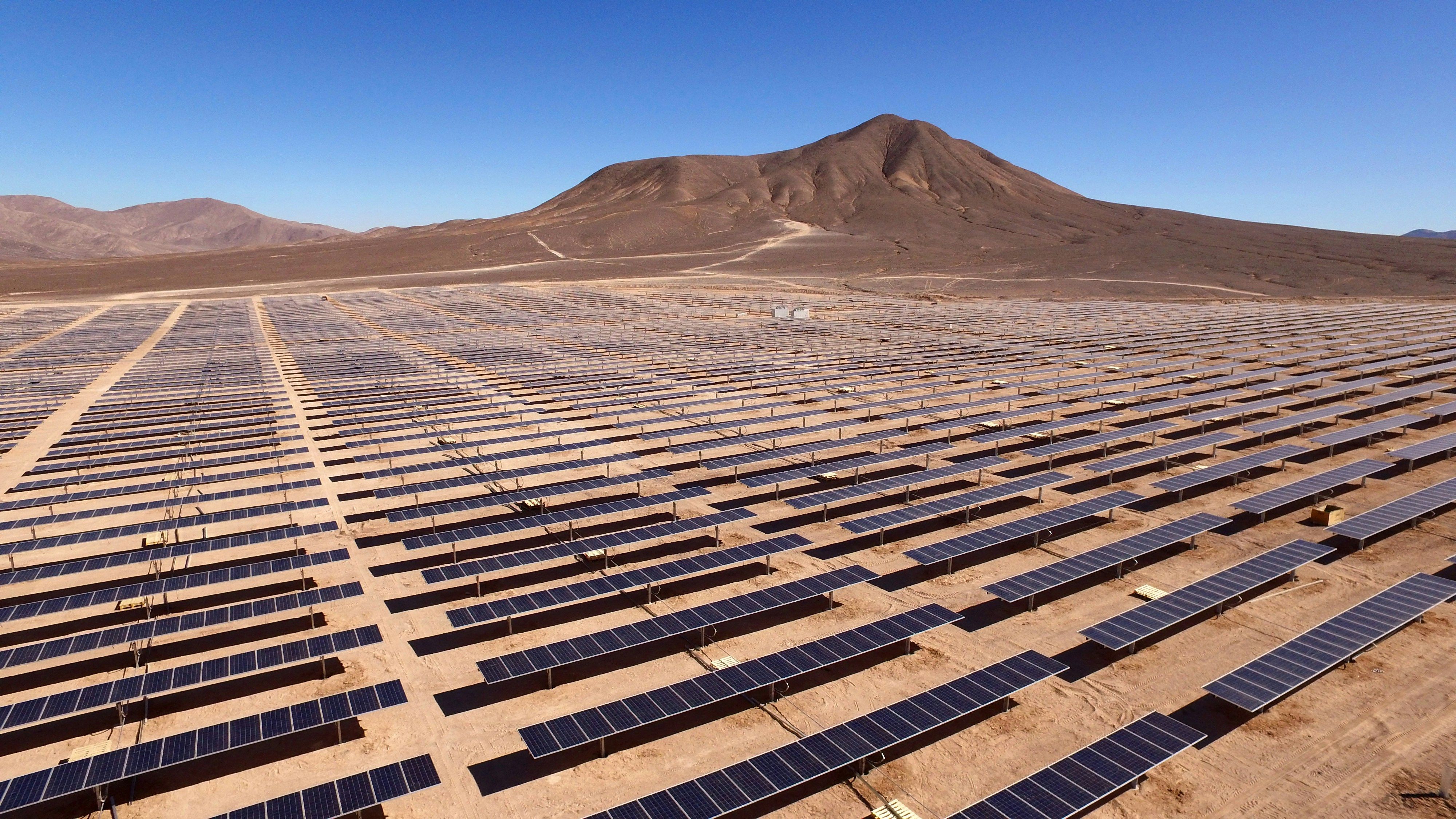- 27 June 2024
- No Comment
- 1255
The Future of Solar Energy? Look to Saudi Arabia

Renewable energy is now at the forefront of global discussions, and Saudi Arabia is making headlines with its impressive strides in solar power. Recently, the Kingdom set a new record for the lowest cost of electricity from solar photovoltaics, coming in at just $10.4 per megawatt-hour (that’s about $0.0104 per kWh). This achievement is not just a number; it’s a game-changer for the renewable energy sector worldwide.
The latest progress made by Saudi Arabia shows that it is committed to long-term growth and creates many opportunities for both the economy and the environment. In this article, we’ll look into what’s causing these historically low prices, how they’re affecting the energy business as a whole, and what it all means for different groups.
The Solar Initiative
Saudi Arabia, a country known for its vast oil reserves, has set its sights on a new path towards a more sustainable future. The country has started an ambitious solar project to get more energy from sources other than fossil fuels and use less of them. This brave move not only puts Saudi Arabia at the top of the world’s renewable energy scene but it also fits nicely with the country’s Vision 2030 plan.
With a population that is growing very quickly, Saudi Arabia needs a lot more energy. Finding an effective and long-lasting way to meet these growing needs is very important. Saudi Arabia uses its lots of sunshine to provide a steady and environmentally friendly energy source through its solar initiative. This not only makes sure there is enough energy, but it also helps the environment.
Solar power technology has come a long way, which is a big reason why Saudi Arabia’s solar project has been so successful. The kingdom can use its plenty of solar resources to generate power at record-low prices through improvements in energy storage, grid integration, and the efficiency of solar panels. These innovations have made solar power a more practical choice and set the stage for a long-lasting and prosperous future.
Key Drivers in Driving Down Costs
The rapid advancements in solar technology have been game-changing for Saudi Arabia. High-efficiency photovoltaic (PV) cells, better inverter technologies, and advanced tracking systems have boosted energy output significantly. These innovations have slashed the cost per kilowatt-hour (kWh), making solar power a strong competitor against traditional energy sources.
Simultaneously, economies of scale have been crucial in driving down solar electricity costs. Large-scale solar projects benefit from lower costs per unit thanks to bulk purchasing, more efficient construction processes, and optimized maintenance routines. By ramping up production, Saudi Arabia has achieved significant cost savings, making solar energy affordable and highly appealing.
Supportive government policies have further fueled this downward trend in costs. Subsidies, tax incentives, and favorable regulations have created an environment that’s ripe for solar energy development. Moreover, public-private partnerships have attracted substantial investments into the solar sector, further cutting costs and speeding up progress.
In summary, the combination of technological breakthroughs, economies of scale, and supportive policies has dramatically lowered the costs of solar energy in Saudi Arabia.
Economic and Environmental Impacts
There are many economic benefits to Saudi Arabia’s solar achievements. When energy prices go down, consumers and businesses save money. This can lead to more money being available for spending and economic growth. The solar business is also growing quickly, creating many jobs in manufacturing, installation, maintenance, and research. These new jobs are being created in several different areas, which is good for the economy as a whole and gives workers new options.
Moving to solar energy is a big step toward sustainability when it comes to the earth. To reduce its use of fossil fuels, Saudi Arabia is cutting down on air pollution and greenhouse gas production. Solar power doesn’t release any pollution into the air, so future generations will have cleaner air and a healthier climate. This change will help the environment immediately and is in line with attempts worldwide to stop climate change.
Saudi Arabia’s success with solar energy is also good news for the fight against climate change worldwide. The kingdom sets a strong example for other countries by showing that solar energy can work and is not too expensive. When many people use solar power, their carbon loads will greatly shrink. This will help fight climate change. Countries that want to switch to clean energy can learn much from Saudi Arabia’s dedication to green energy. This shows how large-scale solar deployment can help the environment around the world.
The Sustainability Perspective
From a sustainability perspective, Saudi Arabia’s progress in solar energy will have huge long-term effects. Solar power and other forms of renewable energy can be used over and over again, so future generations will always have access to clean, cheap energy. This change makes us less dependent on fossil fuels, which are limited resources and encourages us to take care of the earth. Saudi Arabia is not only protecting its energy future by putting money into solar energy, but also setting an example for other countries on how to be environmentally friendly.
The Saudi Arabian solar project fits in perfectly with world goals for sustainability, like the Sustainable Development Goals (SDGs) set by the United Nations. Saudi Arabia directly helps reach Goal 7 (Affordable and Clean Energy) and Goal 13 (Climate Action) by putting green energy first. This agreement shows that the kingdom is committed to long-term growth worldwide. The kingdom’s actions show that national policies can help international goals, encouraging a team effort to fight climate change.
Getting the community involved in the switch to solar energy also helps build a sustainability mindset. People can be encouraged to use sustainable practices through educational programs, campaigns to raise knowledge, and community projects. By getting people involved in the movement for renewable energy, Saudi Arabia can make its culture eco-friendlier. This involvement at the community level ensures that the advantages of solar energy are generally known and accepted, making the community stronger and more resilient.
Renewable Energy Growth
By 2030, 30% of the Middle East’s installed power is estimated to come from clean energy sources. That’s more than the usual 3%, which shows that the region wants to get energy from more than one source.
We will still need natural gas in the short term, but the switch to clean energy sources is on its way. By 2050, 70% of the power in the Middle East will come from renewable sources, like water, solar power, and wind power. We will have to make a big change to stop using fossil fuels. It will help the region ensure it has more energy security and stay on track for more environmental sustainability.
The gradual shift away from fossil fuels is one of the things that makes renewable energy a good investment. By investing in green energy, the Middle East will completely eliminate the pollution and carbon footprint of making things. This trip helps the fight against climate change worldwide, leading to a cleaner and healthier future.
Comparing Saudi Arabia’s solar electricity costs with those of other nations provides a broader context for this achievement:
India: India has made impressive strides in reducing solar energy costs, with recent auctions bringing prices down to around $0.021 per kWh. While this is nearly double Saudi Arabia’s record low, it still marks significant progress for a developing country with high solar potential.
United States: In the U.S., solar power prices vary widely with location and project size. U.S. utility-scale solar project prices have hit lows of $0.025 per kWh in some areas. This is still over two times the price achieved by the Saudis, though it is among the lowest in the world outside the Middle East.
Several factors contribute to Saudi Arabia’s ability to achieve such low solar power costs:
High Solar Irradiance: The region benefits from exceptionally high solar irradiance, receiving over 2,000 kilowatt-hours per square meter annually.
Economies of Scale: Large-scale solar projects significantly reduce the cost per unit of electricity generated.
Low Labor and Land Costs: Compared to other regions, Saudi Arabia enjoys relatively lower labor and land costs, driving down overall project expenses.
Government Support: Strong governmental support and streamlined procurement processes under the National Renewable Energy Program (NREP) have also been crucial.
Saudi Arabia’s record-low prices for solar electricity are a big step forward for renewable energy. The Kingdom’s solar initiative, which is supported by policies that encourage it and new technologies, sets a new standard for clean and affordable energy. The economic and environmental benefits are huge, and other countries can follow this example.
